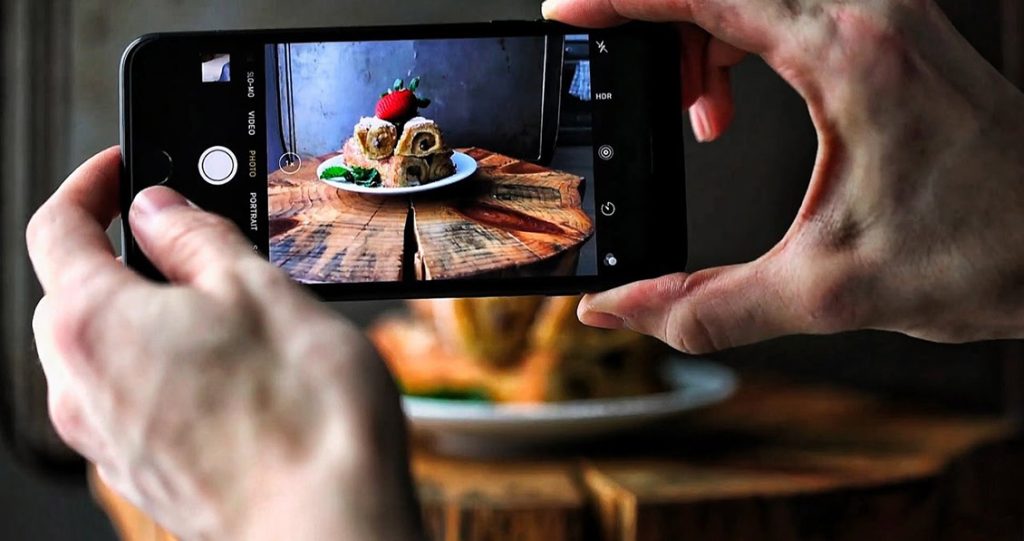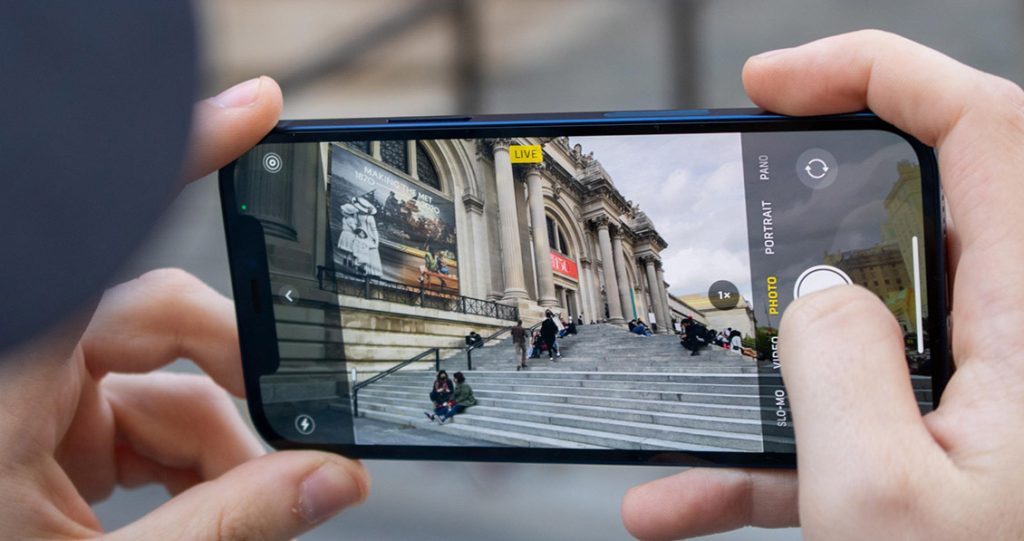The evolution of smartphone photography has been remarkable, with iPhones playing a pivotal role in transforming the way people capture moments. When discussing the trajectory of smartphone cameras, it’s hard not to emphasize the revolutionary impact of the iPhone series. Apple’s relentless pursuit of innovation in camera technology has been integral in shaping the modern photography landscape.
In the early days of smartphones, cameras were basic, offering limited functionalities and mediocre image quality. However, with the introduction of the iPhone, the entire concept of mobile photography underwent a significant transformation. The inaugural iPhone’s camera, though modest by today’s standards, laid the foundation for what was to come.
Over the years, each iteration of the iPhone brought forth substantial enhancements in camera capabilities. From the introduction of autofocus and flash to higher megapixel counts and improved image processing, Apple continuously raised the bar for mobile photography. Innovations like HDR, panorama mode, and burst mode were gradually integrated, expanding the creative potential for users.
The turning point arrived with the launch of the iPhone 4S, which introduced an 8-megapixel camera equipped with a back-illuminated sensor, greatly improving low-light performance and overall image quality. This marked a significant shift, positioning the iPhone as a serious contender in the photography realm.
Subsequent iPhone models saw a remarkable evolution in camera technology. The iPhone 7 Plus brought a dual-camera system, enabling optical zoom and the revolutionary portrait mode. The iPhone X introduced depth-sensing technology for portrait lighting effects, while the iPhone 11 series ushered in the era of Night Mode, drastically improving low-light photography.
The latest iterations, such as the iPhone 14 series, boast advanced computational photography, featuring AI-driven enhancements like Smart HDR 4, improved night mode, and ProRAW capabilities, allowing users to capture and edit images in unprecedented detail.
These advancements have democratized photography, allowing users of all skill levels to capture professional-grade photos conveniently. The iPhone’s integration of high-quality optics, sophisticated image processing, and intuitive user interfaces has redefined what’s possible with smartphone cameras.
In essence, the evolution of iPhone cameras has transcended mere technological advancements; it has transformed the way people perceive and engage with photography, empowering individuals to express their creativity and capture life’s moments with unparalleled convenience and quality.
Understanding iPhone Camera Basics
To master iPhone photography, it’s essential to comprehend the fundamental elements of its camera system. Each component plays a crucial role in capturing exceptional photos.
Lens Types:
iPhones typically feature multiple lenses, such as wide, ultra-wide, and telephoto lenses. Each lens offers distinct perspectives, allowing users to adjust the frame and field of view for diverse compositions. Understanding when to use each lens is pivotal in capturing the desired shot.
Aperture:
While iPhone cameras have a fixed aperture, they simulate various apertures to control the depth of field. A lower f-stop (wider aperture) creates a shallower depth of field, ideal for portrait photography, emphasizing the subject while blurring the background.
ISO Settings:
ISO determines the camera’s sensitivity to light. Higher ISO values are useful in low-light conditions but might introduce noise or graininess. Lower ISO settings yield clearer images but require sufficient lighting.
Shutter Speed:
The speed at which the camera’s shutter opens and closes determines how long light reaches the sensor. Fast shutter speeds freeze motion, while slower speeds capture motion blur. Understanding this setting aids in controlling movement in photos.

White Balance:
White balance adjusts the color temperature in photos. It ensures that whites appear neutral under different lighting conditions, preventing images from appearing too warm or cool.
Understanding and experimenting with these settings empower iPhone users to capture photos with precise exposure, clarity, and artistic control.
Composition Techniques for Captivating Photos
Mastering composition is crucial for creating visually compelling photographs. Several principles can elevate iPhone photography:
Rule of Thirds:
Dividing the frame into a 3×3 grid, placing key elements along the gridlines or their intersections creates balanced and visually engaging compositions.
Framing:
Using natural elements or objects in the foreground to frame the main subject draws attention to the subject and adds depth to the photo.
Leading Lines:
Lines within the frame, like roads, fences, or architectural elements, guide the viewer’s eyes towards the focal point, creating a sense of depth and movement.
Symmetry:
Centering the subject or creating a symmetrical balance in the composition can evoke a sense of harmony and aesthetic appeal.
Perspective and Angles:
Experimenting with different angles – low, high, or unique viewpoints – adds dynamism and visual interest to photos.
By understanding and implementing these composition techniques, iPhone photographers can transform mundane scenes into captivating images, enhancing the visual impact and storytelling of their photos.
Lighting Mastery for Stunning Shots
Natural Light:
Utilize natural light to enhance your iPhone photography. The soft, diffused light during the golden hour (just after sunrise or before sunset) offers a warm glow, creating beautiful, soft shadows and highlights.
Avoid harsh midday sunlight, as it can create strong contrasts and unflattering shadows. Overcast days provide evenly diffused light, ideal for portraits or landscapes.
Artificial Light:
Experiment with artificial lighting sources like lamps, LED lights, or flashlights to manipulate light and shadows creatively. Diffuse harsh artificial light sources to achieve a softer, more flattering effect.
Understanding the Golden Hour:
The golden hour refers to the time shortly after sunrise or before sunset when the sunlight is softer and warmer. Utilize this time to capture stunning photos with a golden glow, emphasizing textures and adding depth to your compositions.
Exposure and Shadows:
Learn to adjust exposure levels on your iPhone to manage highlights and shadows. Tap on the screen to focus on the subject and adjust the exposure slider manually to achieve balanced lighting.
Creating Mood through Lighting:
Experiment with different lighting conditions to evoke specific moods or emotions in your photos. For instance, soft, diffused lighting can create a serene or romantic atmosphere, while dramatic shadows can add intrigue and mystery.
Understanding and harnessing lighting techniques will enable iPhone photographers to craft visually compelling and emotionally evocative images.
Advanced iPhone Photography Tips and Tricks
Long Exposure Shots:
Use the Live Photo feature in your iPhone’s camera to create long exposure shots of moving subjects, capturing flowing water, light trails, or dynamic motion.
HDR Mode:
HDR (High Dynamic Range) mode merges multiple exposures to create a well-balanced, detailed image, especially in high-contrast scenes. Enable HDR mode for scenes with bright and dark areas to achieve a more evenly exposed photo.
Portrait Mode:
Explore Portrait mode’s capabilities to capture stunning portraits with blurred backgrounds (bokeh effect). Experiment with different portrait lighting modes for various artistic effects.
Night Mode:
Utilize Night mode for low-light photography. Keep the camera steady or use a tripod to capture sharp, well-exposed images in challenging lighting conditions.
Editing with Third-Party Apps:
Enhance your photos further by using third-party editing apps like Adobe Lightroom or VSCO. These apps offer a range of editing tools and filters to fine-tune your images creatively.

Additional Accessories:
Consider investing in additional accessories like external lenses, tripods, or handheld stabilizers to expand your creative possibilities and improve the quality of your iPhone photography.
By exploring and implementing these advanced techniques, iPhone photographers can push the boundaries of their creativity and produce stunning, professional-grade photographs.
Showcasing Creativity through iPhone Editing Apps
Adobe Lightroom Mobile:
Explore Lightroom’s powerful editing tools like exposure adjustments, color correction, selective edits, and preset filters. Use features like HSL (Hue, Saturation, and Luminance) for precise color adjustments.
VSCO:
VSCO offers a wide range of artistic filters and editing tools for fine-tuning images. Experiment with film-inspired presets, adjust exposure, contrast, and use its unique grain and fade settings for vintage looks.
Snapseed:
Google’s Snapseed provides a comprehensive set of editing tools, including precise control over exposure, color, sharpening, and selective adjustments. Utilize the healing brush or brush tools for retouching.
Afterlight:
Afterlight features an array of filters, textures, and frames. Explore its creative overlays and unique blending modes for adding artistic elements to your photos.
Enlight Photofox:
Photofox offers advanced editing tools like layers, blending modes, and artistic effects. Experiment with double exposures, surreal compositions, and create composite images.
Facetune:
Ideal for portrait retouching, Facetune enables users to smooth skin, whiten teeth, remove blemishes, and enhance facial features while maintaining a natural look.
Creating Engaging Photography Projects
Landscape Photography:
Experiment with different perspectives, compositions, and use leading lines to capture vast landscapes. Focus on elements like sky, mountains, water bodies, or forests to convey scale and depth.
Portrait Photography:
Explore different lighting setups and posing techniques for portraits. Experiment with natural light, use props, and focus on expressions to create compelling portraits that convey emotions.
Food Photography:
Experiment with food styling, use natural light, and props to enhance food presentation. Focus on textures, colors, and composition to make dishes visually appealing.
Architectural Photography:
Capture the unique angles, lines, and symmetry of buildings and structures. Pay attention to details, use wide-angle lenses, and experiment with perspectives to create striking architectural shots.
Street Photography:
Practice candid photography in urban settings. Capture everyday moments, interesting characters, and unique street scenes that tell stories about life in different places.
Creative Projects:
Encourage readers to explore their creative ideas and themes, experiment with abstract photography, conceptual art, or thematic series that showcase their unique perspectives.
By engaging in various photography projects and utilizing editing apps, iPhone users can explore their creativity, refine their skills, and produce captivating photographs across diverse genres.

